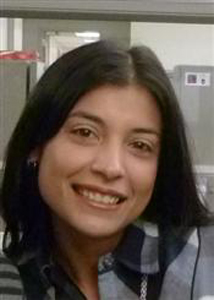Program Information
Gradient Assisted Non-Connected Automatic Region (GANAR) Algorithm: Towards Robust PET-Based Target Definition
P Galavis*, J Holden, B Paliwal, R Jeraj, University of Wisconsin, Madison, WI
TH-C-WAB-10 Thursday 10:30AM - 12:30PM Room: Wabash BallroomPurpose: To develop and validate a PET-based segmentation method that is robust under varying acquisition modes and reconstruction parameters.
Methods and Materials: Gradient Assisted Non-connected Automatic Region (GANAR) method generates texture feature images to segment distinct properties of the tumor with an optimized non-connected region-growing algorithm (twelve contours are generated). An expectation-maximization algorithm is used to define the final region of interest. By incorporating texture feature information and parameter optimization, GANAR is less sensitive to acquisition mode and reconstruction parameters. The accuracy of GANAR was assessed using thirteen inhomogeneous and irregular-shaped lesions from a Monte Carlo phantom simulated PET phantom. The robustness of GANAR was assessed using FDG PET/CT images of twenty patients acquired in 2D and3D modes, and reconstructed with varying parameters. In total, ten reconstructions per patient were used. The Dice and Modified Hausdorff Distance (MHD) metrics were used to quantify accuracy and robustness. GANAR was compared against conventional methods, such as threshold-based, gradient-based and region-growing.
Results: Using Dice, GANAR (0.89±0.04) was more accurate than the threshold (0.83±0.07), gradient (0.75±0.07), and region-growing (0.80±0.08) methods. Likewise, using MHD GANAR (0.2±0.1 cm) was more accurate than the threshold (0.4±0.2 cm), gradient (0.5±0.1 cm), and region-growing (0.4±0.2 cm) methods. GANAR was also more robust with higher Dice coefficient ranges of [0.85-0.98], than the threshold [0.69-0.93], gradient [0.66-0.98], and region-growing [0.46-0.91] methods. Similarly, the GANAR's MHD ranges [0.02-0.18]cm was smaller than that of threshold [0.08-0.23]cm, gradient-based [0.01-0.26]cm and region-growing [0.13-0.70]cm methods.
Conclusion: A new robust segmentation method was developed and validated against simulated PET phantoms and patient FDG PET/CT data. In both accuracy and robustness, the new method outperformed conventional segmentation algorithms.
Contact Email:


